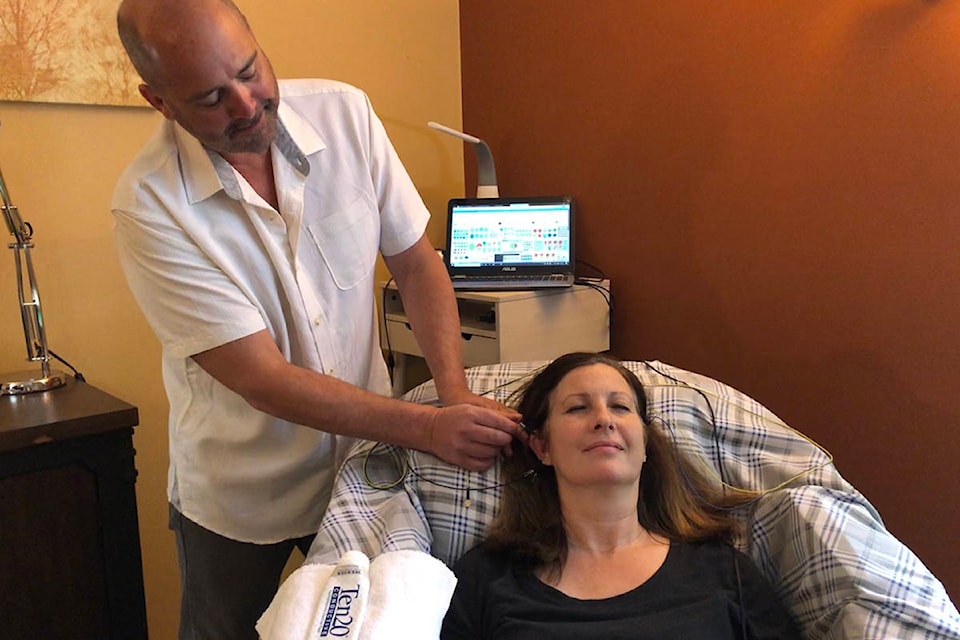Throughout our lives, our brains – the amazing, intricate, ever-evolving organs that they are – adapt and learn from our experiences.
And that’s good news, because while the brain sometimes processes experiences inefficiently – in the case of a trauma leading to anxiety, depression or insomnia, for example – it can also re-learn, explains Jack Brassington, a neurofeedback practitioner and owner of BrainWorks Langley.
Jack, who has also undertaken advanced neurofeedback certification, has provided brain training to hundreds of individuals seeking relief from issues like insomnia, depression, anxiety, lack of focus and aging decline.
How neurofeedback works
At its core, neurofeedback recognizes that just like personal trauma changes our brain and leads to suffering, our brain can also experience positive things allowing it to change back to a place of comfort. The ability for the brain to change in good ways and bad is called neuroplasticity, which is basically learning.
The safe, non-invasive technology has been in use for 50 years with people of all ages. The process is drug-free, doesn’t cause side-effects, and best..the results generally last, Jack says, pointing to Denver, Co., first responders who use neurofeedback as a regular wellness treatment to address the on-the-job stresses of their work and report great improvements with sleep and PTSD.
“When you experience trauma it can change the way your brain processes information. The simplest way to understand how neurofeedback works is that it’s like holding a mirror to the brain so it can observe its own activity and make necessary corrections to improve the way it functions,” Jack explains.
Jack and his colleagues in 23 countries provide about 50,000 sessions per month to their clients around the world.
What happens during a session
First, clients settle comfortably in a zero-gravity chair to allow for complete relaxation during the effortless and non-invasive process.
Jack will then place sensors around the person’s ears and scalp that will pick up the electrical activity of the brain (EEG) and transmit that to a computer system. When the training begins, relaxing music plays via headphones and the computer sends information about the brain’s activity back to the brain through the music in the headphones.
The listener hears tiny interrupts in the music, and those interrupts are a mathematical mirror of the brain’s own activity, which the brain can respond to. Simply, the computer talks to the brain in the brain’s own language via sounds.
Outcomes
What Jack has found from his client experiences, evidence-based research studies on the internet, or testimonials on YouTube, is brain training works for the vast majority of users, and the results generally last. The number of sessions sought varies according to the individual, with some finding the results they want after a few visits, and some as many as 30, and most falling somewhere in between. Jack reports he doesn’t pressure anyone to try neurofeedback respecting the choice of each person or parent to make their own determination. Similarly, it’s up to the client when to end, because every brain and experience will be different.
To learn more, visit brainworkslangley.com
